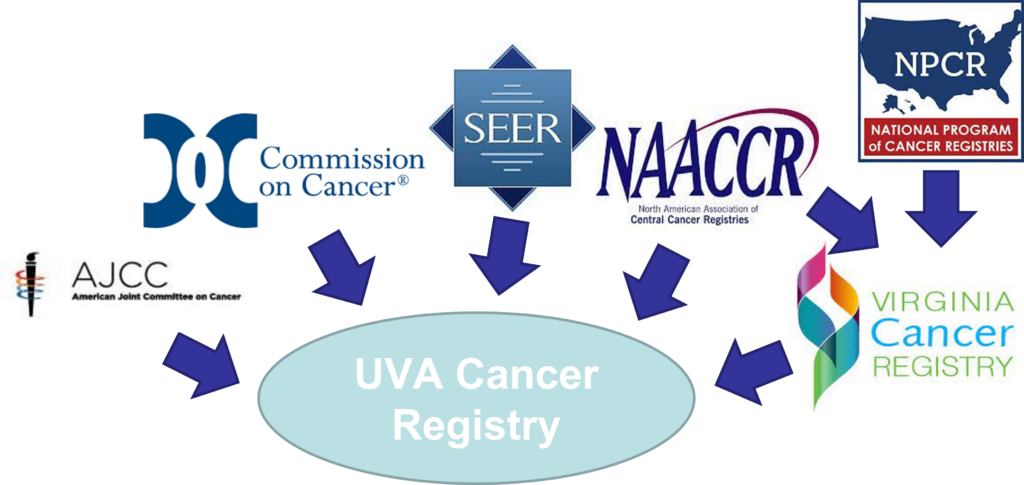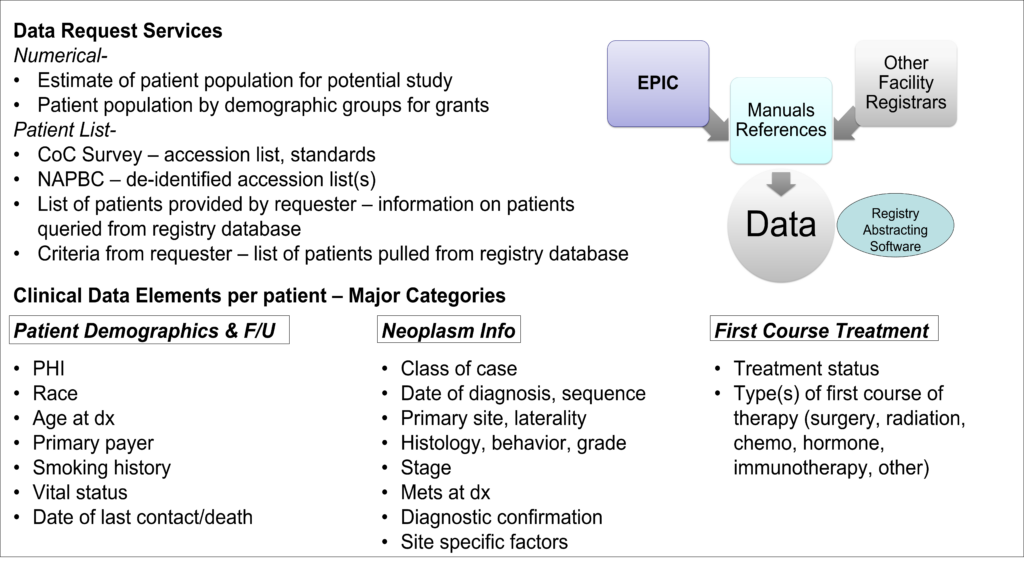Cancer Registry
The UVA Cancer Registry, currently under Cancer Quality and Program Management of the Oncology Service Line, collects and reports cancer-related data in accordance with the American College of Surgeons Commission on Cancer (ACoS CoC) requirements. Under the Code of Virginia, section 32.1-70, hospitals are required to “make available to the Commissioner or his agents information on patients having malignant tumors or cancers” and the information is to be part of a statewide cancer registry.

The UVA Cancer Registry is made up of a team of Certified Oncology Data Specialist (ODS, formerly known as Certified Tumor Registrars or CTRs) who prepares an abstract on each reportable condition/cancer from the patient’s medical record. The abstracts are housed in the cancer registry database and contains demographic, diagnostic, staging, treatment, and follow-up/outcomes information on patients. Information in abstracts are summarized and coded according to rules established by state-level and national-level standard setters (Virginia Cancer Registry, ACoS CoC, SEER, and American Joint Committee on Cancer).
How to access Cancer Registry data for your research
Cancer patients who are diagnosed and/or receive treatments at UVA health are reported. We also collect patients who receive subsequent treatment at UVA. Approximately 100-200 data elements are collected per patient depending on the cancer type. And since 2015, ~4,500 cases are abstracted per year.

This data is now available for self-serve and free browsing through a platform called TriNetX, which is supported by UVA’s participation in iTHRIV. TriNetX includes Cancer Registry data for diagnosis year 2018 and later and is updated with this data on a monthly basis. To request access, please email researchdata@uvahealth.org.
